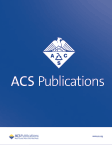摘要 PO5-05-10:转移性乳腺癌研究经费趋势分析
IF 3.4
Q2 PUBLIC, ENVIRONMENTAL & OCCUPATIONAL HEALTH
引用次数: 0
摘要
导言 要为转移性乳腺癌(MBC)研究的资助策略提供信息,了解当前的研究状况并确定需要开展更多研究的潜在空白领域至关重要。2014 年,转移性乳腺癌联盟 (MBCA) 发布的一份分析报告显示,在 2000 年至 2013 年期间,仅有 7% 的乳腺癌研究基金用于转移性乳腺癌的研究。随着越来越多的人罹患转移性乳腺癌,解决该病患者的研究重点就显得尤为重要,同时,了解目前转移性乳腺癌研究资金状况中存在的差距,以便有的放矢地进行投资也很重要。方法 资助者和患者共同努力,分析了国际癌症研究合作组织数据库、健康资源联盟数据库和 MBCA 成员在 2014 年至 2020 年期间资助的乳腺癌项目,这些项目来自全球 83 个非营利组织。我们从这些数据库中提取了这些资助项目的标题、摘要和分类。接下来,为了识别数据库中与转移相关的研究项目,我们建立了一个使用机器学习算法的分类工具,并对 2000-2013 年分析中人工编码的研究基金进行了训练,由专家编码员进行了验证。然后,根据预先确定的转移分类政策对项目进行编码,将其分为研究类型(如治疗)、研究基因或蛋白质、转移部位、乳腺癌亚型和患者优先问题等类别。就后者而言,MBCA 对患有 MBC 的会员进行了有关研究优先事项的调查。会员倡导者根据患者的最高优先级对调查问题进行排序,并将这些问题转换成可使用工具进行查询的语言。结果 从 2014 年到 2020 年,对 MBC 研究的投资几乎翻了一番。患者优先级最高的问题是了解和克服治疗耐药性的研究,占乳腺纤维瘤研究组合的比例从 2014 年的 15% 增加到 2020 年的 26%;从统计学角度看,这一增幅显著高于通货膨胀率。就亚型治疗耐药性而言,关注三阴性 MBC 的项目数量最多(超过 300 个)。相比之下,<20 个项目侧重于克服转移性浸润性小叶乳腺癌的耐药性。在评估的六个类别(如生物学和检测/诊断/预后)中,治疗方面的投资增幅最大。讨论 该编码工具允许进行持续的复杂查询,如确定与 MBC 倡导者确定的重要领域相关的资助研究(表),并提供资助者 "仪表板",以确定需要进一步研究资助的空白领域。资助者和患者权益倡导者之间的这种合作努力以及由此产生的当前和未来分析结果可用于集中宣传工作,以推动对 MBC 的优先领域和研究不足领域的研究资助。尽管资金有所增加,但对转移性研究--乳腺癌的主要致死原因--的投资仍然不足。表.MBC 患者倡导者的研究重点 引用格式:Margaret Flowers、Teri Pollastro、Kari Wojtanik、Katherine McKenzie、Kimberly Badovinac、Medha Deoras-Sutliff、Lynne Davies。转移性乳腺癌研究经费趋势分析 [摘要]。In:2023 年圣安东尼奥乳腺癌研讨会论文集;2023 年 12 月 5-9 日;德克萨斯州圣安东尼奥。费城(宾夕法尼亚州):AACR; Cancer Res 2024;84(9 Suppl):Abstract nr PO5-05-10.本文章由计算机程序翻译,如有差异,请以英文原文为准。
Abstract PO5-05-10: Analysis of Trends in Funding of Metastatic Breast Cancer Research
Introduction To inform funding strategies for research in metastatic breast cancer (MBC), knowledge of the current research landscape and identification of potential gap areas requiring additional research are essential. In 2014, the Metastatic Breast Cancer Alliance (MBCA) published an analysis that showed that between 2000 and 2013, only 7% of all funds for breast cancer research were devoted to metastasis. As more people are living with MBC, addressing research priorities for those living with the disease is important, as is understanding gaps in the current funding landscape of MBC research to appropriately target investment. Methods A collaborative effort between funders and patients was undertaken to analyze breast cancer projects funded between 2014 and 2020 from the International Cancer Research Partnership database, the Health Resource Alliance database, and MBCA members, representing grants from 83 non-profit organizations worldwide. Project titles, abstracts, and classifications of these grants were extracted from these databases. Next, to identify research projects in the databases that are related to metastasis, a classification tool that uses a machine learning algorithm was built, trained on manually coded grants from the 2000-2013 analysis, and validated by expert coders. Projects were then coded according to a pre-established metastasis classification policy to categories such as type of research (e.g., treatment), genes or proteins studied, site of metastasis, breast cancer subtype, and patient priority questions. In terms of the latter, MBCA members living with MBC were surveyed about research priorities. Member advocates ranked survey questions according to highest patient priority, and these were converted to language that could be queried with the tool. Results Investment in MBC research nearly doubled from 2014 to 2020. Research into understanding and overcoming treatment resistance, which was the highest patient priority question, increased from 15% in 2014 to 26% of the MBC portfolio in 2020; this was a statistically significant increase above the rate of inflation. In terms of treatment resistance according to subtype, the highest number of projects focused on triple-negative MBC (>300). By contrast, < 20 projects were focused on overcoming treatment resistance in metastatic invasive lobular breast cancer. Of the six categories evaluated (e.g. biology and detection/diagnosis/prognosis), the largest increase in investment was for treatments. Discussion The coding tool allows for ongoing complex queries such as identification of funded research relevant to areas identified as important by MBC advocates (Table) and provides a funders’ ‘dashboard’ to identify gap areas in need of further research funding. This collaborative effort between funders and patient advocates, and the resulting current and future analyses, can be used to focus advocacy efforts to drive research funding of priorities and understudied areas of MBC. Despite the increase in funding, the investment in metastatic research–the primary cause of death from breast cancer–remains insufficient.
Table. Research Priorities of MBC Patient Advocates
Citation Format: Margaret Flowers, Teri Pollastro, Kari Wojtanik, Katherine McKenzie, Kimberly Badovinac, Medha Deoras-Sutliff, Lynne Davies. Analysis of Trends in Funding of Metastatic Breast Cancer Research [abstract]. In: Proceedings of the 2023 San Antonio Breast Cancer Symposium; 2023 Dec 5-9; San Antonio, TX. Philadelphia (PA): AACR; Cancer Res 2024;84(9 Suppl):Abstract nr PO5-05-10.
求助全文
通过发布文献求助,成功后即可免费获取论文全文。
去求助
来源期刊

ACS Chemical Health & Safety
PUBLIC, ENVIRONMENTAL & OCCUPATIONAL HEALTH-
CiteScore
3.10
自引率
20.00%
发文量
63
期刊介绍:
The Journal of Chemical Health and Safety focuses on news, information, and ideas relating to issues and advances in chemical health and safety. The Journal of Chemical Health and Safety covers up-to-the minute, in-depth views of safety issues ranging from OSHA and EPA regulations to the safe handling of hazardous waste, from the latest innovations in effective chemical hygiene practices to the courts'' most recent rulings on safety-related lawsuits. The Journal of Chemical Health and Safety presents real-world information that health, safety and environmental professionals and others responsible for the safety of their workplaces can put to use right away, identifying potential and developing safety concerns before they do real harm.
 求助内容:
求助内容: 应助结果提醒方式:
应助结果提醒方式:


